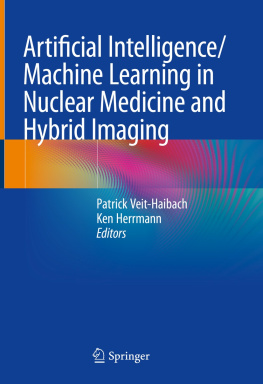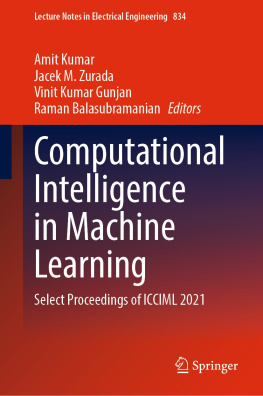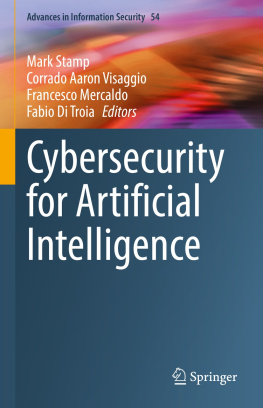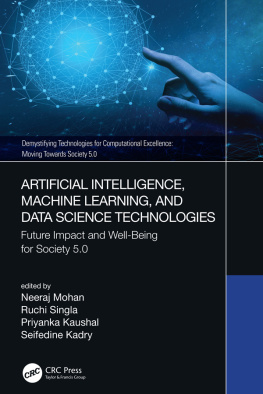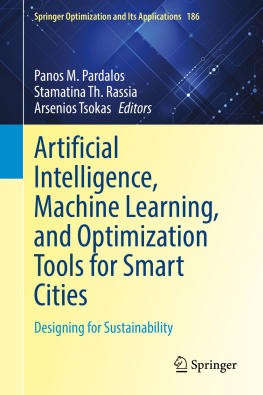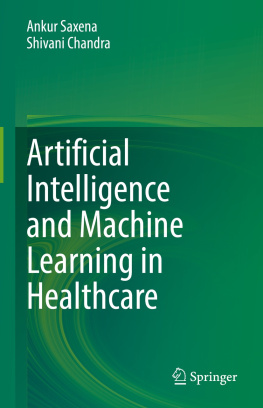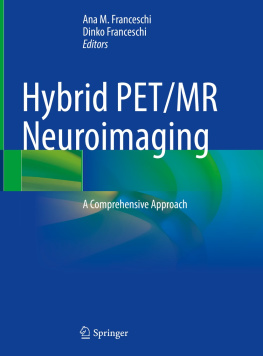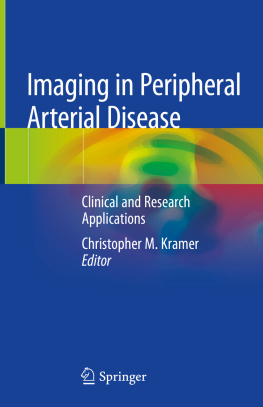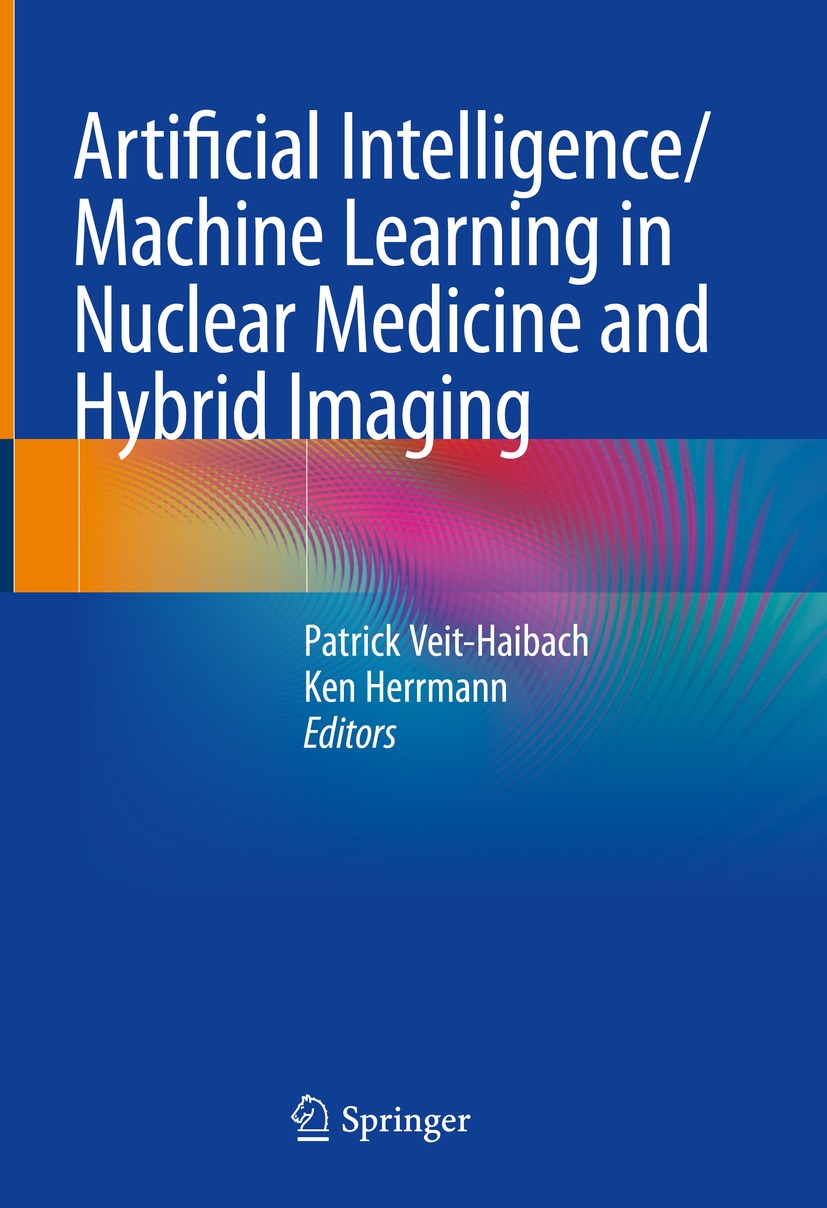Editors
Patrick Veit-Haibach
Joint Department of Medical Imaging, University Health Network, Toronto, ON, Canada
Ken Herrmann
Deptartment of Nuclear Medicine, Universittsmedizin Essen, Essen, Nordrhein-Westfalen, Germany
ISBN 978-3-031-00118-5 e-ISBN 978-3-031-00119-2
https://doi.org/10.1007/978-3-031-00119-2
The Editor(s) (if applicable) and The Author(s), under exclusive license to Springer Nature Switzerland AG 2022
This work is subject to copyright. All rights are solely and exclusively licensed by the Publisher, whether the whole or part of the material is concerned, specifically the rights of translation, reprinting, reuse of illustrations, recitation, broadcasting, reproduction on microfilms or in any other physical way, and transmission or information storage and retrieval, electronic adaptation, computer software, or by similar or dissimilar methodology now known or hereafter developed.
The use of general descriptive names, registered names, trademarks, service marks, etc. in this publication does not imply, even in the absence of a specific statement, that such names are exempt from the relevant protective laws and regulations and therefore free for general use.
The publisher, the authors, and the editors are safe to assume that the advice and information in this book are believed to be true and accurate at the date of publication. Neither the publisher nor the authors or the editors give a warranty, expressed or implied, with respect to the material contained herein or for any errors or omissions that may have been made. The publisher remains neutral with regard to jurisdictional claims in published maps and institutional affiliations.
This Springer imprint is published by the registered company Springer Nature Switzerland AG
The registered company address is: Gewerbestrasse 11, 6330 Cham, Switzerland
Foreword
It is such a pleasure to write the foreword for this visionary and timely book on the role of artificial intelligence (AI)/machine learning (ML) in nuclear medicine and hybrid imagingincluding molecular imaging and theranostics. Discussions of the role of AI/ML are increasingly en vogue in all areas of medicine, from pathology and laboratory medicine to imaging, surgery, neurology, and cardiology, to name a few [1, 2]. In the world of medical imaging, examples of meaningful applications of AI/ML include distinguishing normal from abnormal findings (without necessarily providing a diagnosis or a list of differentials); computer-assisted disease detection and scoring to inform patient management (e.g., in the assessment of coronary calcium [3], detection and management of thyroid nodules [4], evaluation of the prostate by MRI [5], or staging of lung cancer or lymphoma with 18F-FDG PET [6]); computer-enhanced image reconstruction [7]; and lesion tracking, quantification, and categorization for the assessment of treatment response (e.g., with RECIST or PERCIST).
Enthusiasm about the many potential applications of AI/ML is not unmitigated. Concerns have been raised about the lack of explainability [8] and reproducibility [9] of ML-generated data, as well as the lack of validation and proof of applicability in real-life scenarios and under varying conditions (e.g., across age groups and ethnicities). Importantly, to be clinically meaningful, AI/ML models should obviate the need to perform a currently routine task or provide some other advantage, such as an improvement in diagnostic performance or prediction of risk and patient outcome; a reduction in errors (e.g., in exam selection or interpretation); or increased throughput in the clinic. To their credit, Drs. Veit-Haibach and Herrmann have assembled an outstanding international group of authors, who address these issues head-on. The text examines both the challenges of applying AI/ML and the wide range of benefits AI/ML will likely provide for workflow and clinical care. While the potential of AI/ML for advancing healthcare has been touted for quite a while, advances in technology are now bringing this potential closer to realization. AI and ML will have a tremendous impact on nuclear medicine and hybrid imaging on both the front and the back end. Many functions will be automated, improving efficiency while ensuring much better quality control.
The book is divided into several main parts. Part I focuses on the technical aspects of AI and ML and includes a much-needed chapter on repeatability, reproducibility, and standardization of techniques. Lack of reproducibility and an unwillingness to share codes or other programmatic details have been pervasive in the field of AI and ML [9], and a lack of standardization has also stymied the field for many years. It is now time for investigators and vendors to address these issues. Part II lays out current and potential clinical applications. While modern computational techniques are essential to contemporary applications of AI/ML, the groundwork for some of the projects described in this section started decades ago, without using the terms AI and ML; for example, early attempts at computer-assisted recognition, characterization, and description of imaging patterns led to the generation of standardized reports in nuclear cardiology. In this book, Slomka et al. discuss some of the more recent work in this area, all ultimately aimed at the generation of images of better diagnostic quality, with shorter acquisition times or lower injected activities, as well as the prediction of cardiovascular risk. In oncology, different ML methodologies, and the use of radiomics and radiogenomics, can be expected to enhance lesion characterization tremendously, allowing the assessment of much more than the standardized uptake value. In addition, the ability to automatically extract total tumor volume quickly and with high reproducibility will be extremely helpful. The clinical application of AI/ML should also lead to the development of novel imaging biomarkers with predictive and prognostic value far exceeding that of currently available imaging biomarkers. Of note, the value of these markers will be maximized when they are integrated with each other and with other forms of data (clinical, laboratory, etc.) with the help of AI and ML. Beyond diagnostics, AI and ML are expected to play growing roles in theranostics, aiding in appropriate patient selection, dosimetry, and response assessment. Finally, as enormous amounts of data are being gathered in medical imaging, as in all areas of modern life, ethical and legal questions have been raised regarding the ownership of these data and their appropriate use. It is therefore very timely that the editors invited Prof. Prainsack, a political scientist, and coauthors to contribute a chapter that helps put these pertinent issues into perspective and offers potential solutions.
We remain optimistic about applications of AI/ML in nuclear medicine and hybrid imaging. While the future is unpredictable, we do not expect these techniques to replace physicians; rather, we expect changes in the nature of our work, reducing or eliminating some time-consuming tasks, while adding or enhancing others. In closing, we congratulate the editors on contributing this valuable treatise on AI/ML to the literature and hope it reaches the ample audience it deserves.

